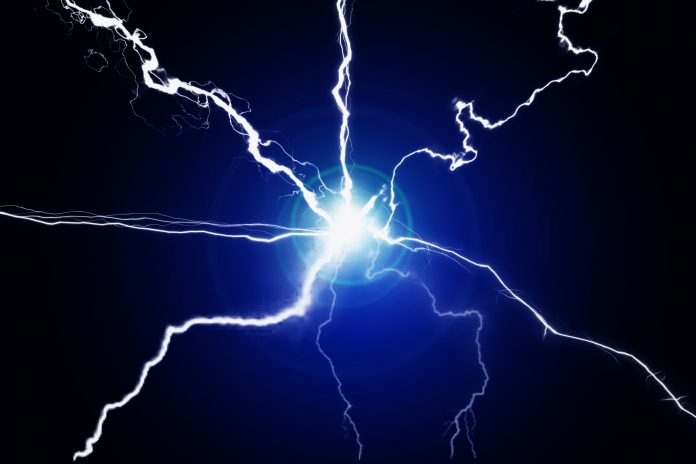Matteo Barbarino from the International Atomic Energy Agency (IAEA) highlights some of the best papers from the 27th Fusion Energy Conference (FEC 2018)
Promoting international collaboration and a good dose of competition are the key ingredients of the senior conference in the field of fusion energy: The International Atomic Energy Agency (IAEA) Fusion Energy Conference (FEC), where having a paper selected for an overview by the programme committee is quite a feat.
As we raise the curtain on the 28th Fusion Energy Conference (FEC 2020), let’s glance through some of the best papers from the FEC 2018 and dip into some fusion classics.
The progress of ITER-India activities for ITER deliverables: Challenges and mitigation measures (OV/1-1)
This FEC was the first ever hosted by India, which through the Institute for Plasma Research (IPR), is partnering with China, the European Union, Japan, Russia, South Korea and the United States to the fabrication of the world’s largest experimental fusion reactor: ITER.
In addition, the IPR is home to two tokamak reactors, the doughnut-shaped configuration for the containment of the plasma: ADITYA and SST-1.
This paper presented the overall status of ITER-India activities for ITER deliverables, the technical achievements in R&D and manufacturing and their application in the Indian R&D fusion programme.
It was Homi Bhabha, an Indian physicist and president of the 1st United Nations Conference on Peaceful Uses of Atomic Energy in 1955, who first recognised the potential of fusion energy research and predicted that “during the next two decades a method will be found for liberating fusion energy in a controlled manner”. UNITED NATIONS, Peaceful Uses of Atomic Energy (Proc Int. Conf. Geneva, 1955), Vol. 16, UN, New York (1956) 35.
Progress toward ITER’s first plasma (OV/1-2)
Since 1988, the FEC rhymes with ITER: the 35-nation collaboration to design, build and operate an experimental reactor to achieve and sustain a fusion reaction for a short period of time. ITER will be the world’s largest tokamak and will enable scientists to observe for the first time a burning plasma, the state when the energy produced by the fusion reaction is almost or completely sufficient to maintain the temperature of the plasma so that the external heating can be strongly reduced or switched off altogether.
Studying fusion science and technology at ITER’s scale will enable optimisation of the plants that follow while leading discoveries in plasma science and technology.
This paper presented the extensive progress in manufacturing and construction of ITER, which is now more than 50% completed, with the first experiments scheduled by 2025.
Featuring ITER for the very first time, Session F at the FEC 1988 made history: Plasma Physics and Controlled Nuclear Fusion Research (Proc. 12th Int. Conf. Nice, 1988, Session F) IAEA, Vienna (1989) 215–284.
Overview of the JET Preparation for Deuterium-Tritium Operation (OV/1-3)
Only one of the operational tokamaks around the world is capable today of deuterium-tritium (D-T) fusion: JET. Holding the record for fusion power production since 1997 (16 MW over 0.85 s), and having achieved 4 MW over 5 s, the European tokamak JET, with new diagnostics, enhanced heating power, real-time network and an ITER-like wall (beryllium first wall and tungsten divertor), is getting ready to start new experiments both with full T and with a 50-50 mix of D and T (aka DTE2 campaign).
These upcoming experimental campaigns, scheduled to start in 2020, will provide a unique physics and technology basis for ITER’s operation. One of the performance goals of the DTE2 campaign is to achieve 15 MW of fusion power for about 5 s.
This paper presented the efforts of JET scientists and engineers in preparation for the DTE2 campaign which includes reviewing of the physics basis for the D-T plasma scenarios, and requires improvement of real-time control schemes, heat load control, disruption avoidance and mitigation system, development of novel Ion Cyclotron Resonance Heating (ICRH) schemes, diagnostics, tritium injection valves, and the calibration of the JET neutron monitors at 14 MeV.
JET first results at the FEC date back to 1984 when initial experiments were reported: REBUT, P.H., et al., “First experiments in JET”, Plasma Physics and Controlled Nuclear Fusion Research (Proc. 10th Int. Conf. London, 1984, Paper No. CN-44/A-I-1) IAEA, Vienna (1985) 11.
DIII-D research towards establishing the scientific basis for future fusion reactors (OV/1-4)
In the 1970s, scientists and engineers at General Atomics developed a novel tokamak concept – called “doublet” – an hourglass-shaped plasma cross-section configuration which allowed for a hotter and denser stable plasma, as opposed to the earlier circular designs.
Pioneering research on the Doublet I, II and III tokamaks contributed significantly to the development of the modern D-shaped plasma cross-section configuration which has inspired a whole class of tokamaks designs, including JET, DIII-D, JT-60, KSTAR, and EAST.
DIII-D is today the largest magnetic confinement fusion device in the USA, and a key machine in establishing the scientific and technical basis for ITER and beyond, through advancing both the fundamental understanding of plasma physics and the scaling to burning plasma conditions. DIII-D scientists and engineers further researched and developed Neutral Beam Injection (NBI) for plasma heating and Resonant Magnetic Perturbation (RMP) for suppressing Edge Localized Modes (ELMs) – plasma instabilities akin to solar flares which have the potential to damage components in future fusion machines.
This paper highlighted the advances from recent DIII- D experiments in key areas of fusion energy science like disruption mitigation, energetic particle physics, turbulence and transport, and the physics of divertor detachment, among others.
DIII-D and FEC go back to 1986 when results from initial experiments were reported: LUXON, J., et al., “Initial results from the DIII-D Tokamak”, Plasma Physics and Controlled Nuclear Fusion Research (Proc. 11th Int. Conf. Kyoto, 1986, Paper No. CN-47/A-III-3) IAEA, Vienna (1987) 159.
Matteo Barbarino
International Atomic Energy Agency (IAEA)
Tel: (+43 1) 2600 26386











